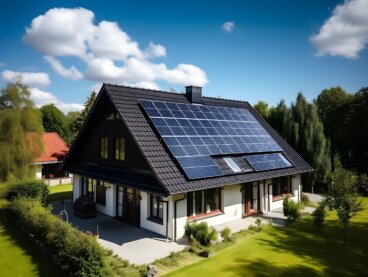Beyond Aesthetics: The Benefits of Biophilic Design

In the realm of architecture and interior design, the concept of biophilic design is a trend that has been gaining significant traction in recent years. Beyond mere aesthetics, biophilic design encompasses a holistic approach that integrates natural elements into built environments to enhance not only the visual appeal but also the overall well-being of occupants. Let’s delve into the multifaceted benefits of biophilic design and why it’s more than just a passing trend.
What is biophilic design?
Biophilic design is an innovative approach to architecture and interior design that seeks to reconnect humans with nature by integrating natural elements and patterns into design. Rooted in the idea that humans have an innate connection to the natural world, biophilic design aims to enhance well-being, productivity, and overall quality of life by incorporating elements such as natural light, vegetation, water features, and natural materials like wood and stone.
By blurring the boundaries between indoor and outdoor spaces, biophilic design creates environments that evoke a sense of harmony, tranquility, and vitality, thereby fostering a deeper connection with nature.

At its core, biophilic design is guided by the principle of biophilia, which posits that humans have an inherent affinity for nature and a fundamental need to connect with it. Through thoughtful design strategies and careful consideration of human-nature interactions, biophilic design seeks to satisfy this need by bringing elements of the natural world into the spaces where we live, work, and play.
Whether it’s incorporating green roofs and living walls in urban buildings, designing interiors with ample access to daylight and views of nature, or creating outdoor spaces that mimic natural landscapes, biophilic design offers a holistic approach to architecture that benefits both individuals and the environment.
The benefits of biophilic design
Enhanced aesthetics
First and foremost, let’s talk about the aesthetic benefits of biophilic design. Picture a space adorned with cascading greenery, bathed in natural light, with wooden accents lending a sense of warmth and tranquility. Such environments evoke a sense of harmony and connection with nature, elevating the visual appeal of any space.

Biophilic design and well-being
However, the benefits of biophilic design extend far beyond aesthetics. Studies have shown that exposure to nature, even in simulated forms within indoor spaces, can have profound effects on our physical and mental well-being. By bringing elements of the natural world indoors, biophilic design promotes relaxation, reduces stress, and enhances overall mood.
Whether it’s incorporating indoor plants to purify the air or designing spaces with views of greenery and natural landscapes, biophilic environments contribute to a sense of calmness and serenity that’s essential for our health and happiness.
Moreover, biophilic design has been shown to improve cognitive function and productivity. The presence of natural elements, such as sunlight, greenery, and flowing water, has been linked to increased focus, creativity, and problem-solving abilities. Whether it’s a workplace designed to mimic the restorative effects of a natural setting or a learning environment that fosters curiosity and exploration, biophilic design enhances cognitive performance and supports optimal functioning of the brain.
Increased sustainability
In addition to its benefits for individuals, biophilic design also holds promise for promoting environmental sustainability. By reducing the reliance on artificial lighting and ventilation systems, biophilic buildings can decrease energy consumption and carbon emissions, leading to a smaller ecological footprint. Furthermore, incorporating sustainable materials and practices into biophilic design projects further enhances their environmental impact, contributing to a greener and more sustainable future for generations to come.

By immersing ourselves in environments that celebrate the beauty and diversity of the natural world, we develop a greater appreciation for the ecosystems that sustain life on Earth. This heightened awareness can inspire us to adopt more sustainable behaviors and advocate for policies that protect and preserve our planet’s precious resources.
In conclusion, the benefits of biophilic design are vast and far-reaching, encompassing aesthetic, well-being, and environmental considerations. By integrating natural elements into our built environments, we can create spaces that not only delight the senses but also nurture our bodies, minds, and spirits.
Whether it’s a small-scale interior renovation or a large-scale architectural project, biophilic design offers a blueprint for creating spaces that harmonize with nature and promote the health and happiness of all who inhabit them. So, let’s embrace the benefits of biophilic design and embark on a journey towards a more sustainable and fulfilling way of living.







